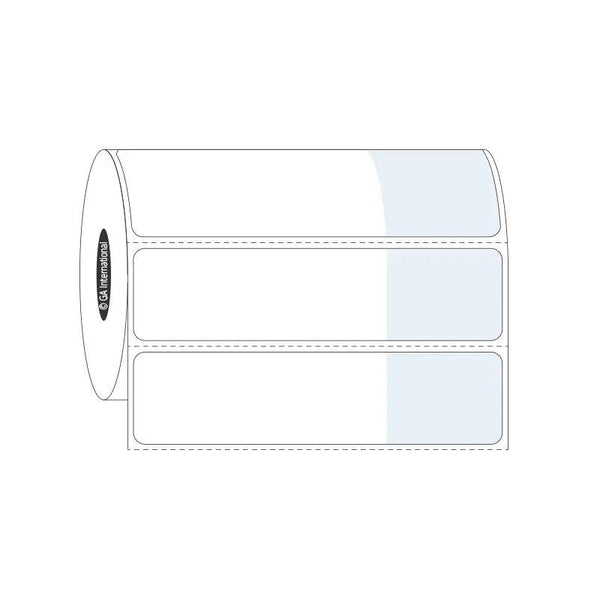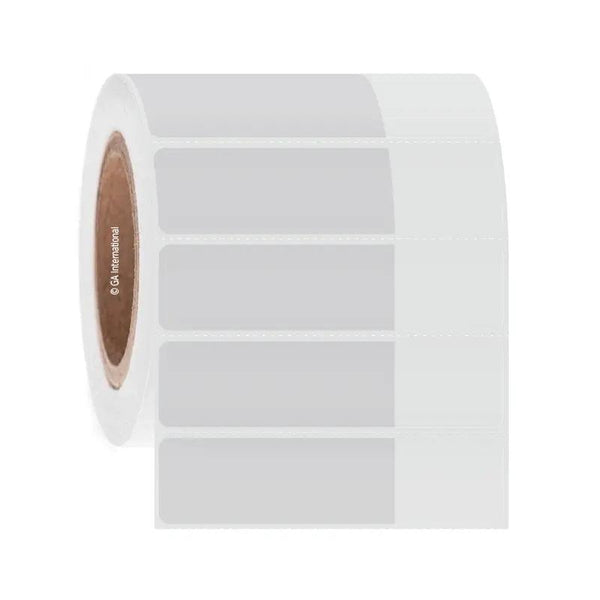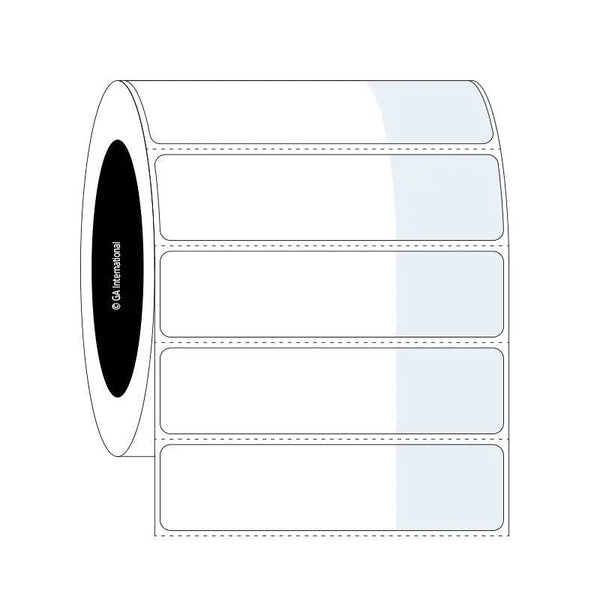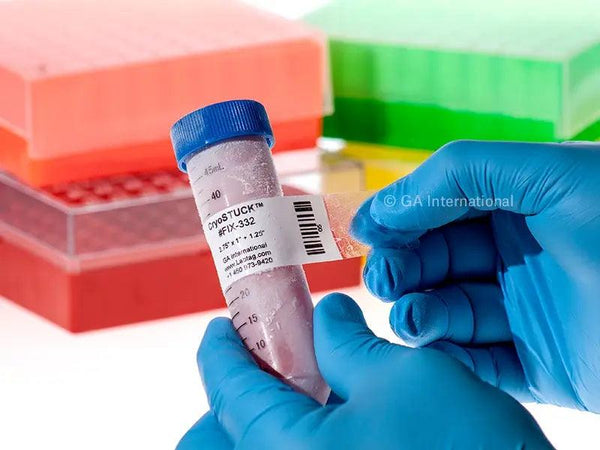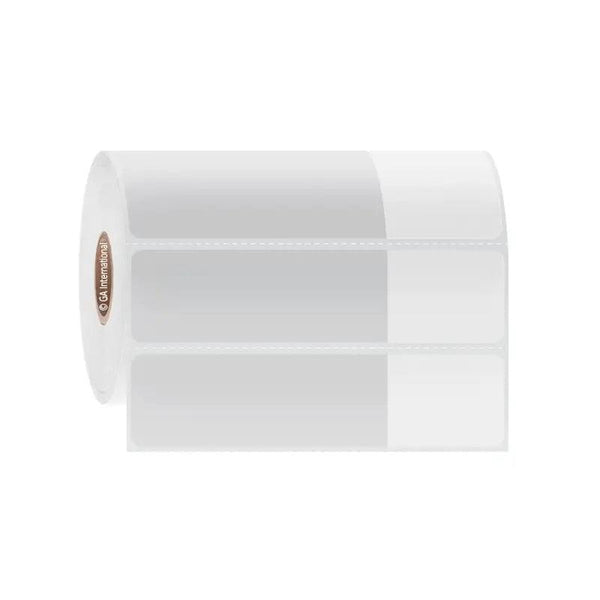
Cryogenic Thermal-Transfer Labels for Frozen Vials & Tubes – 2.75″ x 1″ + 1.25″ Wrap
Cryogenic Thermal-Transfer Labels for Frozen Vials & Tubes – 2.75″ x 1″ + 1.25″ Wrap
The SKU number of these labels has been updated and were previously called FIX-332. The configuration and properties of the labels remain the exact same as before.
CryoSTUCK®- Cryogenic Thermal-Transfer Labels for Frozen Vials & Tubes
Size: 2.75″ x 1″ + 1.25″ / 69.9mm x 25.4mm + 31.8mm
Printable area: 2.75″ x 1″ / 69.9mm x 25.4mm
Labels across: 1
Colors available: White
Labels/Roll: 1,000
Core: 1″ or 3″ / 25mm or 76mm
Perforation: Yes
Adhesive: Permanent for frozen vials
Application temperature: As low as -80°C (-112°F)
Temperature Range: From -196°C to +110°C (-320.8°F to +212°F)
Recommended Ribbons: RR-Class Smudge and Alcohol Proof Resin Ribbons
Labeling of frozen vials is challenging due to extremely low temperatures, frost and moisture accumulated on the surface of these cryogenic containers. CryoSTUCK® labels provide an ideal solution for bio-banks and bio-repositories that need relabeling of already frozen samples inside liquid nitrogen tanks and freezers. These cryogenic labels are available in roll format for thermal-transfer printing. On vials and tubes, it is recommended that CryoSTUCK® labels are applied with an overlap of at least 0.25” to ensure proper adherence to the frozen surface.
Specifications
| Shipping Weight |
1 lbs 0.454 kg
|
|---|---|
| Shipping Dimensions (L x W x H) |
1 × 9 × 11 in 25.4 x 228.6 x 279.4 mm |
| Core Size |
1", 3" 25.4 mm, 76.2 mm |
| Qty / UOM |
1000 |
| Special Features | Frozen Vials, Wrap Around Labels |
| Adhesive | Permanent |
| Brand Name | CryoSTUCK® |
| Surface | Tubes & Vials |
| Printer Compatibility | Desktop Thermal Printer, Industrial Thermal Printer |
| Printing Method | Thermal-Transfer |
| Width |
4″ 101.6 mm |
| Height |
1″ 25.4 mm |
| Printable Width |
2.75″ |
| Printable Height |
1″ |
| Wrap |
1.25″ |
| Labels Across |
1 |
| Tamper Evident |
No |
| Blackout |
No |
| Frozen Vials |
Yes |
| Wrap Around |
Yes |
| Piggy Back |
No |
| Back Slit |
No |
| Product Uom |
Roll |
| Label Uom |
Label |
| Label Wrap Length |
1.25″ |
| Perforated |
Yes |
| Core Type |
Regular |
| Notch |
No |
| Black Mark |
No |
Frequently Asked Questions
Yes, thermal CryoSTUCK® labels require a thermal-transfer ribbon to achieve the proper printout. These cryo labels require a XAR ribbon of the same width or larger.
Yes, our unique CryoSTUCK labels are now available in sheet format, for printing with laser printers. For our Laser CryoSTUCK labels click here.
Yes, CryoSTUCK labels have been especially designed for the purpose of labeling already frozen vials and tubes. These cryogenic labels can be applied at -80°C/-112°F, eliminating the need to thaw valuable samples.
Yes, CryoSTUCK labels can be used to label samples prior to storing them in low-temperature freezers and liquid nitrogen tanks.
No, CryoSTUCK labels are coated with an extra-permanent adhesive, that is not made for easy removal. For removable cryogenic solutions see here.
Please consult our handy sizing guide where you will find recommendations for the most common vial/tube sizes.
Label design and barcoding software can be used to create templates that conform to the size of your label. You can then insert design elements within the template, for easy printing.
No, we don’t recommend our standard CryoSTUCK labels for this purpose. To cover-up existing labels, our blackout CryoSTUCK labels will conceal pre-existing information, while our clear CryoSTUCK labels can be applied over an existing label, acting as a laminate to reinforce it.
For optimal adhesion, wipe away any visibly accumulated frost with a clean lint-free disposable wipe (e.g: KimWipe™). Apply the edge of the label first and press firmly to anchor it, while avoiding excessive contact with the adhesive. If you have a wrap-around CryoSTUCK, apply the printable area first. Then press the label securely into position along the vials’ entire circumference. Our thermal-transfer format CryoSTUCK® labels require an overlap of at least 0.25” to produce a secure adhesion to frozen vials and tubes.

